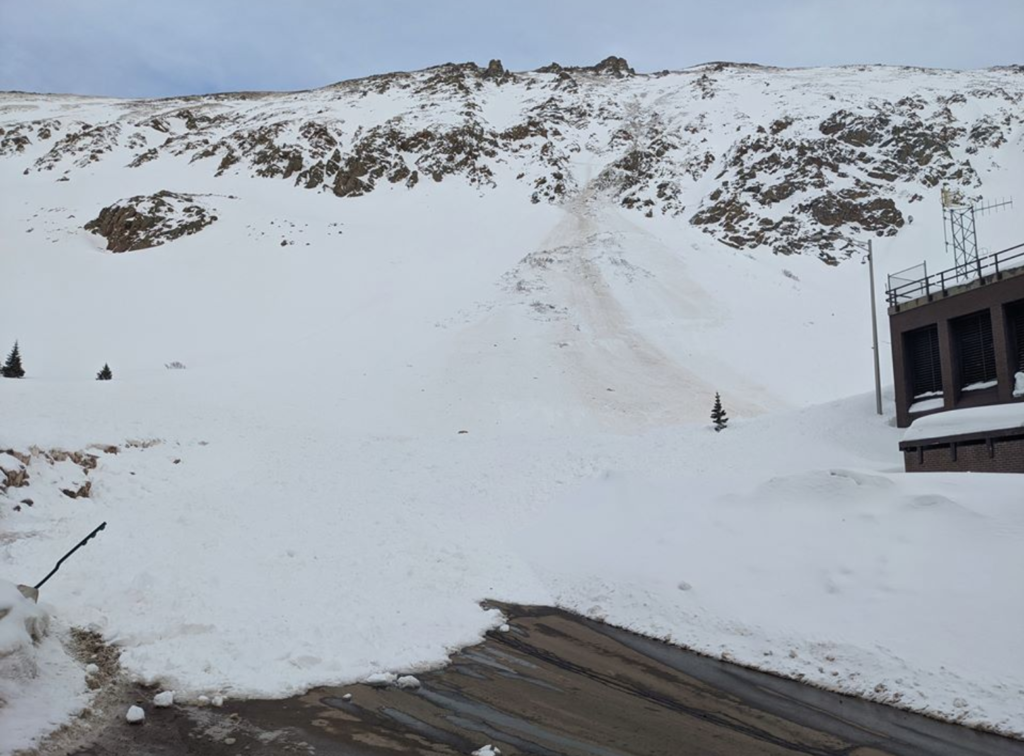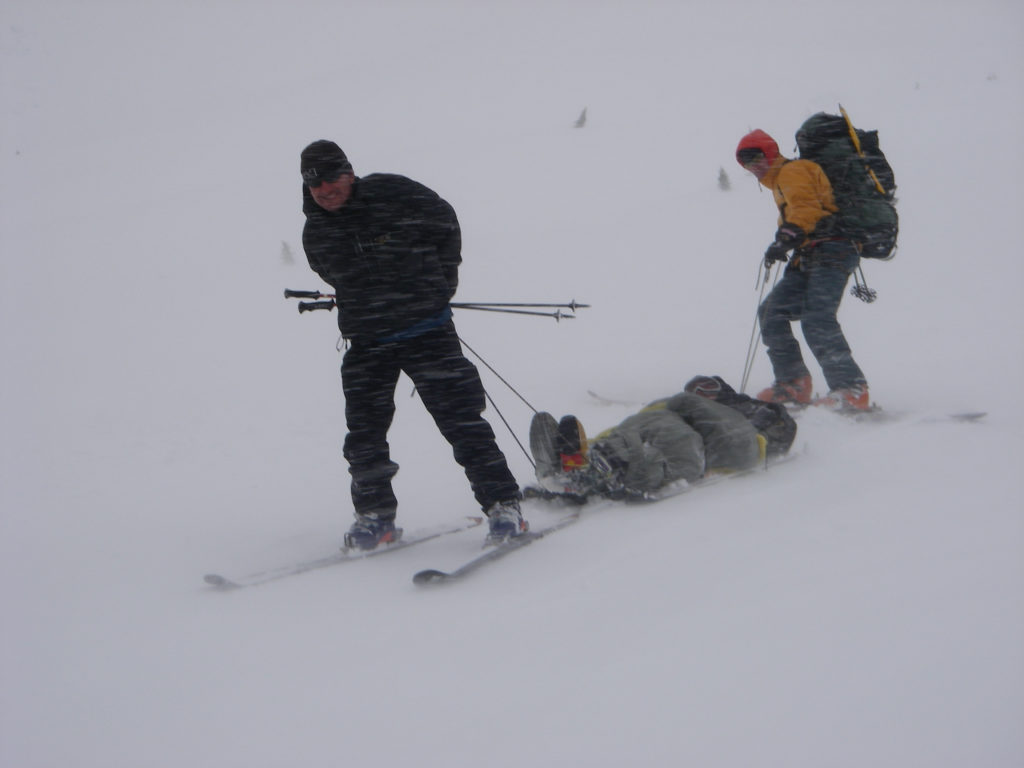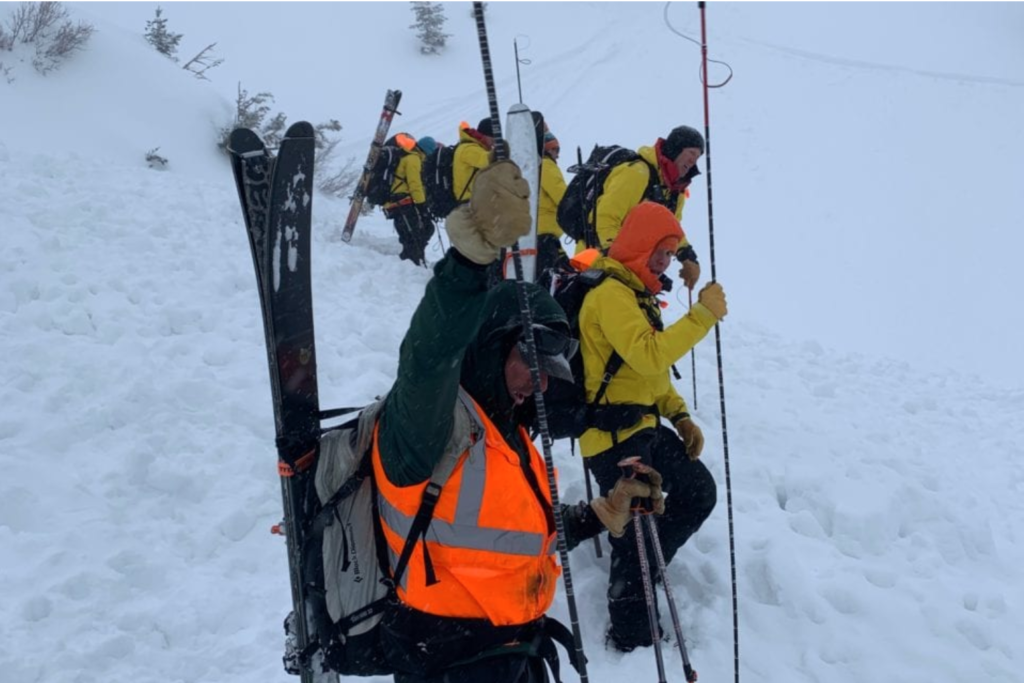- April 5, 2020
Tags
It’s Not About You: Skiing During COVID-19
I was on my seventh day of news-distancing when a friend texted me. A rider had triggered a large avalanche above the west portal of Colorado’s Eisenhower Tunnel. He noted the debris had done some damage and buried the loop road around the tunnel. Not possible, I thought. Nobody would be that careless. I put down my phone, convinced he was just trying to get me riled up. An hour later, three additional friends texted about the same event.
This warranted breaking my news abstinence and firing up the Googler to investigate. Indeed, someone had set off a size D3 avalanche over the Ike tunnel. Even more disturbing was that this event was not an anomaly. I uncovered a multitude of shenanigans that have been going on in the backcountry since the ski resorts closed.

I’ve since been in a quandary. Should we publish something on the current situation in the backcountry during COVID-19? Powder Cloud’s goal is to educate and enable backcountry skiers, not to judge the particular decisions people make. However, I think we’ve crossed the Rubicon.
Seriously folks? Have you seen the latest estimates on the damage COVID-19 will do in the United States? Do you not understand why public officials and many in our backcountry community are asking—no, begging—skiers to reconsider backcountry travel right now? And if you are going to ski, why you’re being advised to avoid travelling in high-risk terrain and consider avoiding all avalanche terrain?
Let’s start with why we’re in this situation.
We are currently experiencing a global pandemic. We’ve not seen anything like this in our lifetime. Many ski resorts across North America closed to reduce the risk of spreading COVID-19. As a result, skiers swarmed the backcountry in unprecedented numbers, many of them on recently purchased equipment. Scott Schell, executive director of the Northwest Avalanche Center, was quoted in The New York Times referring to the backcountry near Seattle: “The last couple of weekends have been downright nuts.”
From what I’ve seen and in speaking with others who’ve recently been in the backcountry, I believe Schell’s right. Social media combined with a new human factor, pandemic scarcity, has skiers crawling around in every nook and stash. Especially in zones near large metropolitan areas like Denver, Salt Lake City, and Seattle. They’re also trigging avalanches—a lot of avalanches.
Let’s be clear about what’s being asked of every backcountry skier.
Many local governments throughout the U.S. and Canada have issued public health orders that affect or restrict travel and recreation during COVID-19, and are asking people to reconsider backcountry travel right now.
If you are recreating, the CAIC provides appropriate guidelines in their blog. I think the CAIC summarizes it perfectly, “If you are recreating, please do so responsibly. This includes following social distancing requirements, not taking actions that risk pulling emergency service workers away from the important work they’re doing, or compromising their ability to continue that work.”
No matter what your particular state or province is telling you, you need to check with and respect your local health and travel orders.

It’s important to understand why they are asking us to rethink backcountry travel.
The obvious reason is to reduce the risk of spreading the virus, which large crowds of people, going to the same locations to ski, can and will do. The less obvious reason is that backcountry skiing is a risky endeavor, especially for people who recently purchased gear and have little training. You do not want to risk injury and tax a healthcare system that needs to put all its resources into helping our community get through this pandemic.
Please, let’s not forget the search and rescue teams. They are likely operating with limited resources right now. They have families and don’t want to increase their risk of exposure. Some might have primary jobs working as an EMT, nurse, or doctor at a hospital, and these are the most important people in our community right now.
Avalanche Canada stated on their website that at least one search and rescue group in B.C. has requested a closure of the backcountry, because volunteer organizations are not sufficiently equipped to deal with the added hazard of this virus.

Right now, people are out there throwing gas on the fire. They are proving why public officials need to issue orders.
Here are just a few examples:
- A snowboarder was caught and seriously injured in an avalanche near Ophir, Colo., requiring an extensive rescue response and helicopter evacuation. Click here for the preliminary accident report.
- A skier was caught and injured in an avalanche near Rico, Colo. Preliminary report here.
- A rider triggered a size D3 avalanche near the West Portal of the Eisenhower Tunnel, which reportedly did some damage and buried a maintenance road.
- Utah Avalanche Center has reported a disturbing and long list of human triggered avalanches in the last week; it’s likely there have been just as many that went unreported.
- Sadly, there have been recent fatalities in Wyoming and Idaho.
If you are venturing out, adjust your mindset.
If you are going recreate in the backcountry during COVID-19, we ask that you adjust your strategic mindset. The Strategic Mindset was first presented by Roger Atkins at the International Snow Science Workshop (ISSW) in Banff in 2014. Many professional operations in Canada have adopted it as a formal part of their risk management strategy. I and other recreational skiers and guides have successfully integrated it into our risk-management and decision-making process.
Atkins states that each of us have a mindset about the potential risks and rewards associated with travel in avalanche terrain; our mindset has tremendous influence on our decisions. He believes it is possible to adjust one’s desires to improve decision-making in avalanche terrain, and that one can deliberately focus on desires that are most likely to be compatible with conditions and circumstances. Atkins, obviously, did not craft a particular mindset for a global pandemic, yet we can utilize his framework to help us during these times.
Please consider adjusting your mindset and focus on desires that are compatible with the current conditions and circumstances under COVID-19. What you personally think about COVID-19 is not the priority—it’s about other people and your community right now.
A few simple guidelines:
- If you go, do everything in your power to not get injured. Do not risk triggering an avalanche.
- Know the local public health orders and restrictions for the areas you are riding in.
- Do your homework. Follow the AIARE framework to prepare, plan, and ride safely. This is not a time to wing it.
- Avoid complex and challenging terrain, and terrain you’re unfamiliar with. Be certain you can navigate easily in the terrain you choose and avoid all mountain hazards.
- Place a large buffer or margin of safety between you and the avalanche problem and all other mountain hazards.
- Choose terrain with low consequences.
- Manage uncertainty. If you are uncertain about the conditions and hazards, dial it back. Reduce the risk and choose safer terrain to compensate for your uncertainty. Avoid areas and snowpack you are uncertain about.
- Remember that your actions may impact others. Consider the burden you might place on our already strained search and rescue and health care systems should someone in your group get hurt or worse. Keep your communities and fellow backcountry members in mind when you consider your terrain choices.
- Save the hucking, charging, aerials, and shenanigans for next season, please.
I’ll leave you with this.
I remember asking my father why he lied about his age (he was 17 and the legal age was 18) so he could join the Marines and fight in World War II. He explained to me that it was just one of those rare moments in history where “everyone just had to set aside their personal desires and do what was right, for the community and the country.” The consequences of his choice to enlist early were severe. He lost his leg on Iwo Jima, during the last few days of the battle. He said, “I’d do it all over again, and wouldn’t think twice about it.”
We’re in one of the rare moments in history now.
Through backcountry skiing, Paul Rogers has found incredible happiness, lasting friendships, and the opportunity to traverse the snowscape across Europe and North America. He founded Powder Cloud to help others safely find the same.



